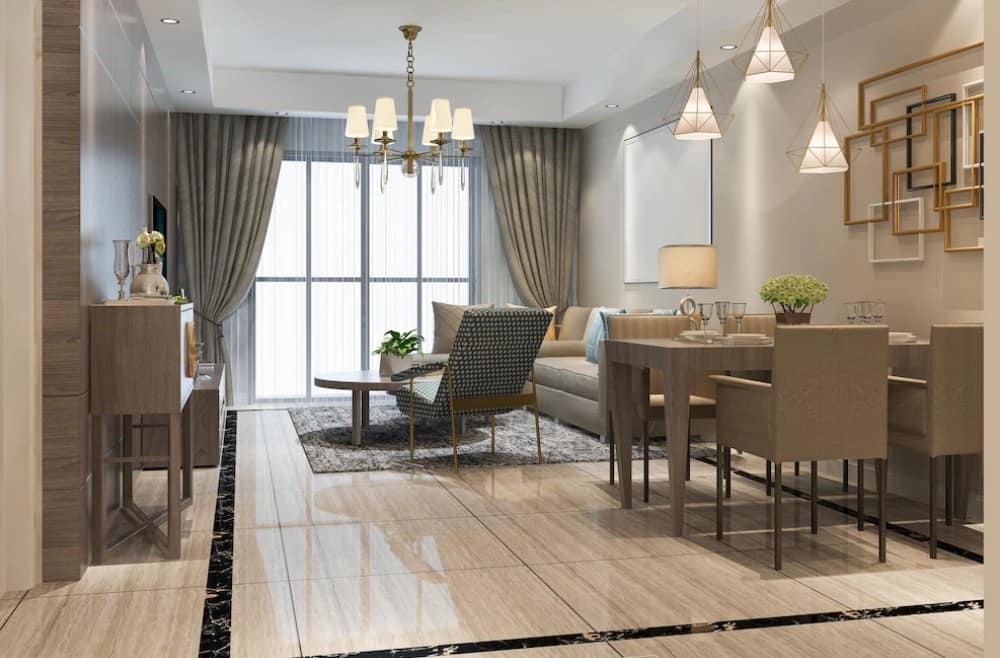Home modifications can be a little more complex than others, but they are still part of the NDIS, which supports participants with various items and services. A home modification is a change to the structure, layout, and fittings of a participant’s home that allows them to securely access and live comfortably in their home.
We’ll explore what NDIS-funded home modifications mean, how they work, and how you can better understand NDIS funding in this blog for NDIS-funded home modifications.
Table of Contents
ToggleWhat are NDIS SDA housing modifications for the disabled?
Home modifications are sometimes necessary to cater to the needs of people with disabilities in their own homes for ease of access, comfort, and mobility.
Participants can perform daily tasks much more quickly when simple changes are made to their homes, from bathroom modifications to kitchen alterations. Complex structural changes will sometimes be needed to help a participant become safe and independent.
Participants in the NDIS can benefit from supportive services such as home modifications by gaining greater accessibility, confidence, and peace of mind in their homes. NDIS home modifications for disabled make it easier for participants to access and move around areas of their home that are accessible to them (e.g., layout, fittings).
Who are eligible for the SDA house modifications?
The participant’s primary residence and the intention to remain in residence are required for home modifications to be considered. Whenever changes are made to a rental property, the owner must sign a written agreement before being carried out.
Your home modification plan may include the following criteria:
- You cannot access common areas/rooms within your primary residence or with the help of your caregivers.
- An occupational Therapist has recommended Home modifications.
- Your primary residence poses significant and adverse challenges to your current living and care plan.
To access the home modification plan, the NDIA needs the participants to submit their home modification support plan and reflect sufficient evidence to take the home modification support.
What are the SDA-approved housing modifications for the NDIS participants?
People often modify their homes mainly for adaptive living reasons.
The uncertainty of how to make changes or whether they can make them limits the progress of many people. You should understand the types of home modifications the NDIA permits if you consider modifying your home.
A home modification can be classified into three types under the NDIS:
- Low-cost, easily accessible improvements.
- Minor home modifications require professional assistance to make the necessary changes since they are low-cost, non-structural items.
- Modifications to a complex home require structural changes and may encompass alterations to several house parts, categorised under Complex Home Modifications.
Participants must engage a Building Works Project Manager (BWPM) for complex construction if they cost more than $30,000.
What are the popular SDA disability housing modifications preferred by NDIS?
There are many ways to make a home more accessible and usable, from minor reconstructions to significant renovations.
People with chronic illnesses and disabilities may benefit from it as part of their care and management. Accessibility can be improved by removing physical obstacles from its surroundings through home modifications.
Here are the popular housing modifications for specialist disability accommodation:
#1. Ramp installation
NDIS participants with balance issues or unsteady feet may require ramps to access exterior stairs. In addition to providing greater independence, this home modification will also reduce energy consumption. A licensed contractor builds and installs the correct rise and height.
The installation of indoor ramps makes transitions from one surface to another safer. These ramps are typically rubber, so they can easily adjust to fit the step or door jamb height required to make the transition.
#2. Floor modifications
Older NDIS adults trying to age in their place should also consider flooring when making home modifications.
Choosing the floor for a home modification begins with assessing its existing floors.
One can replace old slippery carpets with new short-nap ones, which are safer for the NDIS participants and more practical for those who navigate their homes through wheelchairs or walkers.
While making home modifications for NDIS individuals, one should consider all areas of the home that are troublesome or problematic for the participants. Few of such includes improving the countertops and light switches, including the floors.
#3. Bathroom modifications
The NDIS individual willing to reside in their accommodation should also consider home modifications for the bathroom.
If you want to replace the bathtub with a walk-in shower, which makes boarding and exiting much easier (and safer), you may consider replacing it with a walk-in shower.
#4. Accessible seating
An electric or self-powered lifting seat will help you comfortably get up from an armchair. It tilts gently forward to help you stand.
These comfortable seats are often upholstered in thick memory foam, making them suitable for sitting on sofas, armchairs, or office chairs for hours.
When you have someone to lift you, you will not only be more independent but also healthier: after a long, tiring day.
When you strain to get up, your muscles can become sore, and anxiety about hurting yourself can further compound exhaustion. Investing in assistive devices like lifting seats can help maintain home comfort for as long as possible.
#5. The NDIS medical alarm
Medical alert systems are an invaluable tool for those aging in place. These units track the elderly at risk; pre-set contacts are notified of falls, and emergency services are notified if the alarm button is pressed.
Apps for smartphones and wearable devices like necklaces and bracelets are available for these alarm systems. It is generally possible to set up the wearable style on a flat surface or on a wall that connects to a home base.
Some alarms work like doorbells, ringing an alarm in the home base when the button is pressed, allowing direct communication between the wearer and their emergency contact.
Others have two-way speakers, allowing for direct communication between the wearer and their emergency contact.
Who are the SDA housing providers for home modifications?
Those with significant impairments who find it challenging to carry out basic day-to-day activities can benefit from NDIS home modifications providers. To maximise independence and safety at home, home modification providers can assist NDIS participants.
For the home modification service, firstly, you must go through an NDIA assessment and then approach the home modification providers listed under NDIS home modification.
However, suppose you don’t want to take the home modification. In that case, you can go for the specialty disability accommodation of NDIS at Advance Care Agency, where all the changes needed are done in the homes for the disabled, which are developed under NDIS SDA structure guidelines.
What will the NDIS not fund for the SDA NDIS housing modifications?
Although the funds are available for disability housing, there are certain limitations set by the NDIS for the modification of the disability accommodation.
The NDIS generally does not fund for:
- Exceptional fixtures, fittings, or materials.
- Notwithstanding the NDIS not being involved in the purchase decision, or if purchasing a more accessible property was not an option, adjustments can be made to a property purchased after gaining access to the NDIS.
- Spas and swimming pools (including hydrotherapy).
- Damage discovered during or before the modification process is repaired or remedied.
- If the home modifications are completed, additional insurance premiums will be payable.
- Maintaining non-specialised structures, fixtures or fittings of the home even when altered.
- If a rental property has been modified, the modifications should be removed when no longer needed.
What is the importance of SDA housing NDIS home modifications?
Home modifications often help achieve independence, safety, and self-esteem outcomes.
For instance, there is a mobility issue for the NDIS individual with the fear of falling or tripping. They, in that case, need assistance from a caregiver or a family member to move around.
It can be challenging for a person in this situation to perform basic daily tasks independently, resulting in serious health problems.
From home modification, safety and functionality get improved that increasing accessibility and reducing trip hazards, such as installing level access showers and ambulant toilets.
Moreover, structural changes like widening doorways allow clients to navigate their homes safely and unaided, facilitating increased independence.
Is NDIA or NDIS funding for the home modifications for NDIS housing?
Individuals with disabilities are eligible for various funding options based on the type of modification required and their ability to meet the eligibility criteria. Some funding schemes for home modifications include My Aged Care and NDIS. Others may pay for the transformation themselves if they are not eligible for funding.
Conclusion
A participant with an NDIS plan may have funding available for home modifications, or their existing plan may be undergoing a review.
Your home may require changes due to your disability or your current living environment, or our Occupational Therapists may have assessed that your everyday living environment requires additional support for you to live comfortably.
Our team assesses the accessibility of homes and provides support for modifications using the National Disability Insurance Scheme (NDIS) and State Government funding schemes.
After funding is secured, one of our professionals will work with you, your family and caregivers to identify any barriers or hazards in the house.
In the next step, we discuss your home modification goals and how they can help you achieve them.
Suppose you don’t want any home modification but want assistance from the SDA provider to select the NDIS rental properties for short-term or medium-term accommodation.
In that case, you can review the available vacancies in disability homes near me or disability housing in NSW at Advance Care Agency!





